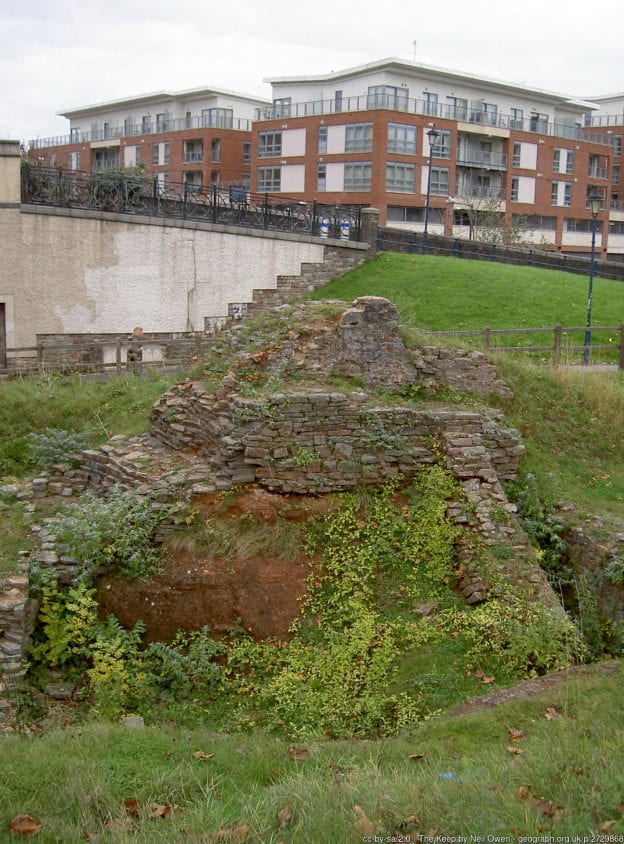Regency Villas v. Diamond Resorts [2017] EWCA Civ 238
Regency Villas was one of those rare cases to engage with the law students’ favourite question, ‘can a certain right be an easement?’ – a chance to use the Ellenborough Park test on something other than parking rights or storage. It concerned certain rights for those occupying one piece of land to go onto a neighbouring piece of land (Broome Park Estate, Barham, Canterbury) for a variety of recreational and sporting reasons (including swimming, golfing, tennis and squash playing). This brought up the issue of whether rights which were ‘merely’ recreational could be said to accommodate the dominant tenement, as required by In Re Ellenborough Park [1956] Ch. 131, and whether they were too vague to ‘lie in grant’. It gave lecturers a chance to bring the concept of ius spatiandi out from the back of the cupboard. The upshot of the case was that the rights in question were allowed, and the sensible deduction from it was that the objection to something as merely recreational would be unlikely to work in future. Unusually for such a case, it went up to the Court of Appeal, and the judgment has just been reported, so what has the Court of Appeal done with it?
Reminder of the facts
The dispute centred on a grant made in 1981,
“for the Transferee its successors in title its lessees and the occupiers from time to time of the property to use the swimming pool, golf course, squash courts, tennis courts, the ground and basement floor of Broome Park Mansion House, gardens and any other sporting or recreational facilities … on the Transferor’s adjoining estate”
This was held at first instance (HH Judge Purle QC) to amount to a grant of an easement or easements. The ‘servient owners’ appealed, claiming that the rights in question could not be easements because of (a) the expense involved in maintaining the factilities, and (b) the change of facilities since 1981. If some of the rights involved were easements, they contended that others were personal rights only, and that the judge should not have allowed them as a ‘bundle’ of easements as he did.
Over to the CA: (judgment delivered by Sir Geoffrey Vos)
- Yes (again) to recreational easements
First of all, the CA agreed with the first instance judge that the fact that a right may be classed as recreational is not a bar to its qualification as an easement. Care was taken to deal with one of the most frequently-cited snubs to such rights, and to affirm (i) that the list of easements is not closed and (ii) that the list must move with the times (as interpreted by CA judges).
At [56], there is a decisive rejection of the ‘mere recreation’ Baron Martin’s view in the Exchequer case of Mounsey v. Ismay (1865) 3 H. & C. 486 at page 498, that there could not be easements for “mere recreation or amusement”:
“… [A]n easement should not in the modern world be held to be invalid on the ground that it was “mere recreation or amusement” because the form of physical exercise it envisaged was a game or a sport. To be clear, we do not regard Baron Martin’s dictum as binding on this court, and we would decline to follow it insofar as it suggests that an easement cannot be held to exist in respect of a right to engage in recreational physical activities on servient land.”
The idea of moving with the times is emphasised at [1]: “‘Since [the time of Ellenborough Park], the culture and expectations of the population of England & Wales have radically changed. This case has to be considered in the light of those changes.’ and at [54]: “…[T]the views of society as to what is mere recreation or amusement may change …”
The way in which the CA thinks that societal views have changed, indicating the need for a change in the rules about what qualifies as an easement, relates to the regard in which physical exercise is held:
[54]: “…Physical exercise is now regarded by most people in the United Kingdom as either an essential or at least a desirable part of their daily routines. It is not a mere recreation or amusement. Physical exercise can, moreover, in our modern lives, take many forms, whether it be walking, swimming or playing active games and sports. We cannot see how an easement could … be ruled out solely on the grounds that the form of physical exercise it envisaged was a game or a sport rather than purely a walk in a garden.” [54]
This might appear to be good, healthy and unobjectionable, but there are certainly some things to think about as well.
As is the way with property law decisions, this is presented as the product of a process of deduction and analogy, using both previous decisions and supposedly ‘common sense’ assumptions about life and land use.
I am not sure, for example, how many people would find the inclusion of justifications based on the allowance of profits a prendre for hunting and fishing purposes a very appealing argument. In addition, judges do leave themselves open to a certain amount of questioning when they use some sort of normality criterion or implication when working out whether something passes the test for qualification as an easement. We may feel a little bemused, for example, by the inclusion of the information that [66] “The utility and benefit to a dominant dwelling or timeshare property of the ability to use a next-door tennis court is obvious to any modern owner. Many country homes these days have their own tennis court or courts precisely as a benefit for the occupants.” or [71] “…[T]he utility and benefit to the dominant tenement of the ability to use a next-door swimming pool is obvious. As with a tennis court, some modern homes have their own pools as a benefit and a utility for the occupants.” We may also feel that there is a certain unreality in the suggestion at [76] that “We are all familiar with the teams of groundsmen and greenkeepers that [high quality golf] courses need to employ to maintain them to the high standard that players frequently desire.” (my emphasis and disbelief).
- What’s in and what’s out?
The CA did think that the rights ought to have been split up and considered individually, rather than as a bundle [51]. They proceeded to look at nine different potential easements, ranging from use of the ‘formal Italianate garden’, through golfing, to use of post-1981 facilities.
So it was yes to: use of the ‘formal Italianate garden, croquet lawn, putting green and golf course but no to the right to use the reception, billiard room and TV room and other facilities within a building on the servient tenement, or a restaurant. This rejection was justified in very property-law terms, as [79] “the right granted is really not in the nature of an easement at all. It is not about the use of any land, but the use of facilities or services that may for the time being exist on the land.”
While one may be glad to hear that “A restaurant is not like a toilet…” [79] there is food for thought in the distinctions being made here between different activities, and who is most likely to be in a position to benefit from them (so – yes to golf and tennis, no to TV, billiards, eating). Although the steps of the decision are often explicitly linked to the particular wording of the grant or facts on the ground, or realty and personalty (except when using an example based on profits, which certainly mix these concepts), there must also be an issue about the paradigmatic landowner or occupier of a dominant tenement who is lurking in some of this thinking. What does it mean for those who are not physically able (or who just prefer billiards to golf)? Is there a gendered aspect to any of this?
As far as the swimming pool was concerned, things were slightly more complex. In principle, an easement would have been legitimate in this area, but there was a problem – the servient owners had filled in the original outdoor pool and built another, indoor one. Because of the time factor and the change in location, no easement was allowed over the new pool. It was not [80] a ‘direct substitute’ for the original pool [Crystall ball – look out for disputes over the difference between substitution and improvement on the one hand and extension on the other]. The ‘dominant tenants’ might, however, still have an easement over the (now-non-existent) original outdoor swimming pool. (The sometimes almost whimsical area of ‘non-abandonment despite non-existence’ is one of my favourite parts of easements). The court left that to be sorted out separately.
Misc.
A specific issue with regard to this case was that the slightly odd way in which the original transfer dealings were carried out might have led to particular rights being lost within 24 hours. This was something which seems to have weighed in favour of construction of the rights as easements at first instance (since this would tend to mean that they would survive), The CA was keen to keep separate the questions of qualification as an easement and acquisition of an easement: [62] “the parties’ intentions cannot ultimately validate an attempt to grant an easement of a facility that cannot in law be the subject of an easement”. A good model for law students to follow.
Conclusion and musings
On the specific facts of the case, this judgment showed a narrowing of the rights allowed as easements, compared to the first instance decision. Nevertheless, from a law student’s point of view, the most important thing is the reaffirmation of the fact that it will not be possible to challenge the legitimacy of an easement simply because it is ‘recreational’.
For those who would like to take it further, there are a few things to ponder here. This does seem to be an area in which rather a lot of value judgments about land use and recreation can be brought in under cover of black letter property law principle. Arguments by analogy from the paradigm of the private right of way do seem to be rather creaky, particularly when the facts are far removed from the original context of the law of easements. Whereas many familiar easements cases involve individual landowners, this was about something rather more commercial. There are property companies and groups of companies involved. There is golf rather than ‘taking out small children in prams or otherwise’. Does Ellenborough Park, even with extensions (or improvements) really work in this context? The ways in which property lawyers consider these matters (including a sadly glossed-over ‘rather academic’ debate as to the nature of water in a swimming pool as realty or personalty – [71]) may well seem to many people to be as baffling as the words ‘incorporeal hereditament’ themselves.
GS 5/4/2017

